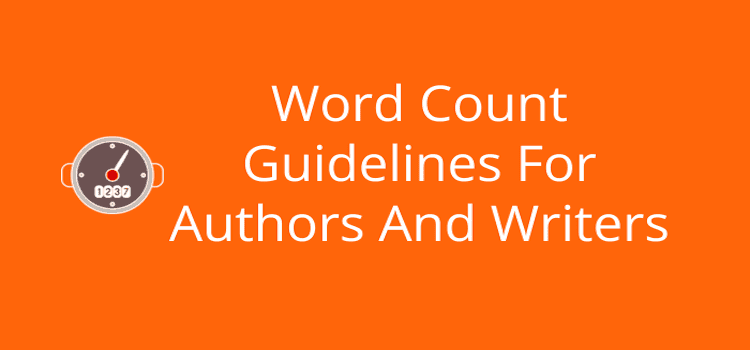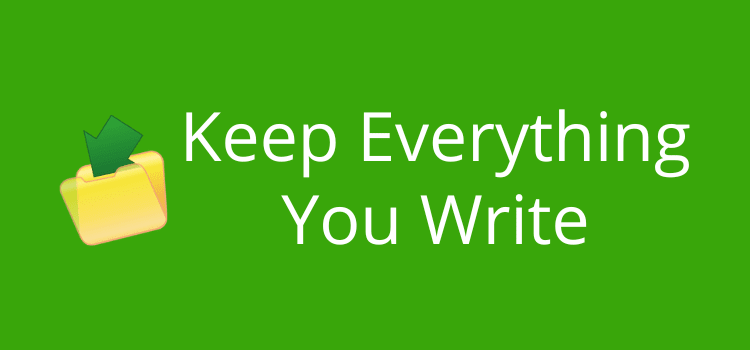
Nothing is written in stone, but word count guidelines can give you a useful clue for a new writing project.
You might be staring at a blank page and wondering where to start and how many words you should write.
It doesn’t matter if you’re a new blogger, content writer, or author; the number of words you need to write can feel like a distant target.
But it’s not as daunting as it seems because it’s only an approximate aim. Once you start writing, let the words flow freely, and your count will often look after itself.
What are the general rules for word count?
For all forms of writing, there’s no one-size-fits-all answer for word count guidelines.
In some ways, it’s like asking, how long is a piece of string?
But there are some generalizations that you can apply to books, short stories, articles, and blog posts.
As a rule of thumb, a fiction novel can be somewhere between 50,000 to 110,000 words.
It is often a little shorter for non-fiction or biographies and memoirs, at between 30,000 and 70,000 words.
Self-help books and ebooks often have a count between 15,000 and 25,000 words.
Flash fiction and short stories can be anywhere from 2,500 to 5,000 words.
Online content is a bit of an open question.
However, quality articles usually have a minimum of 1,000 words, whereas a blog post can be as short as 200 to 300 words.
Whatever you are writing, don’t get hung up on word count targets because they can vary greatly depending on so many factors.
Specific word count for novels
An average novel usually falls between 80,000 and 110,000 words. But some genres, such as romance and young adult fiction, tend towards the shorter side.
On the other hand, science fiction and fantasy are often quite long due to the need for world-building.
However, there are no hard and fast rules.
Well-known epics like War and Peace by Leo Tolstoy and The Lord of the Rings trilogy by J.R.R. Tolkien dwarf these averages, coming in at 567,246 words and 432,000 words, respectively.
Here’s a quick look at word counts for some other famous novels.
Harry Potter and the Sorcerer’s Stone: 77,325 words
The Hitchhiker’s Guide to the Galaxy: 46,333 words
The Hobbit: 95,356 words
Gone with the Wind: 418,053 words
Pride and Prejudice: 153,527 words
1984: 35,343 words
Alice In Wonderland: 27,000 words
Noble House: 288,000 words
As you can see from these examples, there is no rule at all for the length or word count of a novel.
Other books and writing
When it comes to short stories, there is no standard length.
For example, flash fiction, a subgenre known for its brevity, typically falls under 1,000 words.
But novellas can typically range from 15,000 to 40,000 words.
For online writing, an average article is often around 1,000 to 1,500 words, with magazine articles typically ranging from 1,000 to 3,000 words.
But for blog posts, anywhere from 200 to 300 words is fine.
However, one exception is scientific papers or academic journals, which can stretch into tens of thousands of words.
Don’t be driven by word counts
While the word count guidelines I’ve provided are a starting point, there are many instances where breaking away from the average can be advantageous.
For example, a blog post with a provocative headline might not need a lot of detail, but a technical article might require a longer and more in-depth explanation.
For fiction, you might start wanting to write an epic, but the story and plot don’t lead you there.
Perhaps you’ll be content with a shorter novel or even a novella.
Articles are never a set length. Use as many or as few words as necessary to cover all the relevant points.
You might only need 500 words for some topics, but it could take 3,000 words for more complex ideas needing more in-depth explanations.
Align your word count with your intent
The key to managing word count is understanding the purpose of your writing.
What do you want to convey to your readers? Is it to educate, entertain, or persuade?
Tailoring it to your purpose will ensure that your message lands effectively.
No piece of writing is too short or too long. But it has to match readers’ expectations.
A novel of 3,000 words won’t work, nor will a 20,000-word article.
Always match the length of your writing to what you believe your readers will accept.
But to give you a guide, the graph below gives an approximation of the average and high word counts for different genres and forms of writing.

Word count tools
Lots of tools can help you monitor your word count.
Word processors like Microsoft Word, Google Docs, and Apple Pages have built-in word count trackers.
You can also find trackers in some writing tools.
The Hemingway Editor, ProWritingAid, and Grammarly can provide you with more comprehensive feedback, including readability scores and suggestions for improvement.
But in the end, remember that it’s just a number. Use them as a guide, not as your master.
Summary
Word count for your writing is like a compass. It can guide you in the right direction but won’t tell you your final destination.
But by understanding standard or average lengths or even exploring unconventional approaches, you can align your word count with some degree of purpose.
If you are a new writer, keep in mind that word count guidelines are simply recommendations and not rigid rules to follow.
Stay flexible, experiment, adapt, and find your storytelling rhythm, no matter how many or how few words it takes.
Writing is all about creativity but also involves a sprinkling of purpose and intent.
In the end, the length of your writing is all about what your readers expect and will enjoy reading.
Sources:
Related Reading: Short Ebooks – Do Novellas Sell Better Than Longer Reads?
Share This Article


